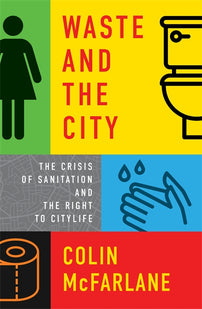Sick in the city
The COVID-19 pandemic exposed spatial conditions as opposed to pure population density as key factors in how infection travels through a city.

Local and global disease outbreaks are becoming increasingly common. Before COVID-19, we had already seen them in rapidly urbanising China and Africa, including SARS and Ebola. These diseases moved from urbanising hinterlands to cities, including Hong Kong, Toronto, Freetown, and Monrovia.
Across the world, the urban periphery is undergoing an increasingly intense transformation, and with it enhanced zoonotic risks can quickly become regional and global problems. The land mass of cities globally has increased at a faster rate than their populations. Research using population data and satellite maps has shown that sprawl is outpacing densification across the world. Yet the immediate focus as the COVID-19 pandemic emerged was not on peripheral urbanisation and the conduits of global trade and travel, but on high densities at the core of large cities.
Concerns over density and sanitation emerged early in the pandemic. The high death toll in New York, the initial epicentre of the outbreak in the United States, led then-governor Andrew Cuomo to espouse his own version of telescopic urbanism: ‘I touch this table – the virus could live here for two days. You come tomorrow, I’m gone, you touch that spot . . . In New York City, all that density, a lot of people are touching a lot of spots, right? Park bench, grocery counters. Just picture the city in daily life.’ In other cities that were initially badly impacted by COVID-19, including Milan and Madrid, density was often identified as the progenitor of transmission.
There was a form of ‘sanitation syndrome’ or ‘hygienisation’ connected to density in these discourses, a geographical imagination of the city as so many sites of contamination resulting from too many people crowding into the same places. Urbanist Joel Kotkin argued that high-density living was central to the crisis from the start, ‘from the pandemic’s genesis in crowded, unsanitary urban China to the much higher rates of hospitalization and death in large cities’.
It is not surprising that this view emerged, given that the virus did grip a large urban agglomeration – Wuhan – and in its initial stages quickly became connected to big, dense cities and urban regions, including New York, Milan, Madrid, and London. The flipside of these sanitation syndromes was the idea that low-density spaces are safer from contamination. It was also reflected in a much more serious, sinister politics, such as efforts to ‘de-densify’ townships and informal settlements in South Africa and India, including shocking stories of opportunistic urban eviction and demolition by the state. In South Africa, the government used ‘heat maps’ to identify twenty-nine areas for ‘de-densification’, lower-income neighbourhoods that were to, in the disturbingly sanitised words of one minister, ‘relocate and decant’.
However, even in the early stage of the pandemic, there were counter-examples to the ‘blame density’ position and its attendant sanitation syndromes. Most obviously, there were those cities with high densities in which authorities had relative success in managing the virus, including South East Asian giants Singapore, Hong Kong, Taipei, and Seoul. Moreover, it appeared that their relative success was in fact partly to do with their high densities, including in pursuing contact tracing, the extent of public health infrastructure, investment in sanitation across the public realm and transit systems, the uptake of face masks, and the fact that many people live with the memory of the 2003 SARS outbreak and quickly changed their practices.
In Hong Kong, the 2019–20 protests against the Chinese state extradition bill helped ensure that a ready civic infrastructure was in place to facilitate community responses and provisioning. Evidence emerged that higher density areas often have better quality health care and greater amounts of both formal and informal mutual support networks.
Rather than density, it was particular spatial conditions that were seen to be especially impacted by COVID-19. Roger Keil, for example, noted that it was ‘care homes, prisons, camps, reserves, some work environments such as meatpacking plants and among migrant farm workers’ that were sometimes the worst hit by infection, hospitalisation, and death. While Singapore was praised for its handling of COVID-19, there were spikes in recorded infections among the city’s migrant worker population, including in crowded dormitories housing up to twenty male workers from China and South Asia in a single room. If density played a role in increasing COVID-19 infection levels, then, it was a particular expression of it: overcrowded, often poorly ventilated domestic and labour conditions, with insufficient investment in sanitation provisions.
— Excerpted from Waste and the City: The Crisis of Sanitation and the Right to Citylife by Colin McFarlane
[book-strip]
